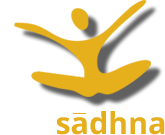Folk Dances of Maharashtra: Maharashtra is also famous for its folk dances. Some of the main dances are ‘Dholacha’, ‘Konlyacha’, ‘DadhikalaorHandinritya’, ‘Dashavatar’, ‘RadhaNach’ ‘Tamasha’ etc.
Dholacha is a folk dance full of elation and excitement. In this dance ‘Dhol’ instrument has an important place and as such it would be appropriate to call it ‘Dhol Nritya’. In the dance, dancers stand very closely in a circle and put forward a little their left leg. They move in circle putting their hands either on each other’s shoulder or around the neck or waist and call loudly “ho ho ho”.
Dadhikala or HandiNritya has Krishna Leela as its theme. This dance is performed on the day following Gokulashtami. The dancers call “Govind-Govind” and go to each other’s house dancing on the way. In this dance, a child plays the role of Krishna and other dancers put their hands on each other’s shoulders and move forward tapping their feet on the ground in a sequential manner. A pitcher full of butter and curd is hung at some height and the boy acting as Krishna climbs on the shoulders of the dancers, reaches the pitcher and breaks it causing the curd to fall. For grabbing the curd, the dancers and audience rush in and it is believed that there would be no dearth of milk and curd by performing the dance.
Like HandiNritya, Dashavatar is also a religious dance and in this folk dance story of various reincarnations of Lord Krishna is presented. The narrator (Sutradhar) first of all prays to Lord Ganesha and Saraswati and invites them on the stage and then through them presents the various reincarnations of Lord Vishnu in their garb on the stage.
RadhaNach is also a popular dance of Maharashtra. This dance is charaterised by emoting the poems depicting the playful episodes of Lord Krishna and Radha through facial expressions. In this dance, Radha is kept in the centre and it is performed with simple body movements. To begin, the main dancer (Nayak) sings a line from the song and then other dancers repeat the same. This dance is characterised by exquisite dress and beats.
Lavani is the traditional folk dance belonging to the state of Maharashtra. It is performed for entertainment only. Lavani dance does have religious or mythological themes like in some of the other folk dances of India. Lavani can be performed either vigorously or in a soft and subtle manner. It is performed by a beautiful dancer clad in a bright nine yard saree and lovely pearl and golden jewellery. It is performed by the main dancer, her co-dancers, a person with a dholak and another person who announces the Lavani in the public. The person who announces the Lavani on stage is called “Paindya”. The dance starts with the dholak wala playing the dholak vigorously and the Paindya shouting “Aaika ho Aaika” attracting the attention of the public. Aaika means ‘Listen’. The main dancer enters the stage flaring the ‘pallu’ of her saree and then facing the audience paying them greetings known as “Mujra”. Mujra is a gesture which is performed by the hand and bending towards the audience. The main part of the dance is performed on the Marathi songs which are full of life. Lavani is performed by trained dancers in the open like on a small stage on the ground or now even in the theatres.

